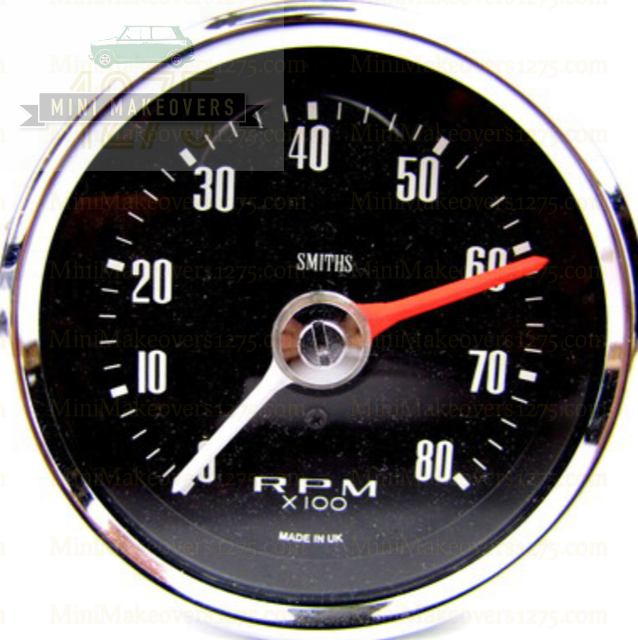Exactly how to Select the Right Tachometer for Your Auto or Bike
Exactly how to Select the Right Tachometer for Your Auto or Bike
Blog Article
The Value of a Tachometer in Keeping Track Of Engine Rate and Performance in Automotive Applications
In the world of vehicle engineering, the tachometer stands as a crucial instrument in the vehicle driver's toolbox, providing a direct window into the inner functions of a car's engine. Beyond its function as a simple scale of revolutions per min (RPM), the tachometer acts as a vital tool for enthusiasts and experts alike, supplying real-time insights into engine efficiency and health. Comprehending the relevance of this device exceeds surface-level observations, delving into the detailed relationship between engine speed, power result, and overall driving experience. As we check out the complex duty of the tachometer in automobile applications, a deeper recognition for its influence on car characteristics and performance begins to emerge.
Importance of Keeping Track Of Engine RPM
Keeping an eye on engine RPM, or transformations per minute, is a vital element of automobile maintenance and performance evaluation. Engine RPM directly correlates with the speed at which the engine's crankshaft rotates, indicating exactly how swiftly the engine is running - tachometer. By keeping an eye on RPM, auto mechanics can examine the health and wellness of the engine, discover prospective issues, and fine-tune performance. An abnormal RPM analysis might indicate problems such as engine misfires, faulty trigger plugs, or problems with the gas distribution system. Regularly high RPM readings could suggest aggressive driving behaviors or the demand for a greater gear change to boost fuel performance.
Furthermore, checking engine RPM is vital for performance evaluation in auto racing and high-performance cars. Preserving optimal RPM degrees is essential for attaining peak power output and velocity. Racers frequently make use of tachometers to guarantee they are operating within the excellent RPM range for optimum performance. In summary, checking engine RPM is not only crucial for identifying problems yet additionally for enhancing engine efficiency in various vehicle applications.

Benefits of Real-Time Data
In vehicle applications, real-time data plays a critical function in supplying instant insights into the efficiency and problem of the car. By constantly keeping an eye on numerous criteria such as engine rate, temperature, gas intake, and more, real-time data offers countless advantages that add to enhanced effectiveness and safety when traveling.
One considerable advantage of real-time data is its capability to alert chauffeurs and specialists to any abnormalities or issues promptly. This positive strategy enables fast recognition of potential problems, permitting prompt treatments to stop additional damage or failures. Furthermore, real-time information facilitates efficiency optimization by providing instant comments on driving routines and engine performance. Drivers can adjust their actions in real-time based on this details to accomplish better fuel economic climate and prolong the life-span of their vehicle.

Moreover, real-time information plays a vital function in modern auto diagnostics, enabling professionals to quickly identify and address malfunctions. This brings about reduced downtime, reduced maintenance expenses, and inevitably, improved general automobile reliability and durability (tachometer). By taking advantage of the power of real-time data, automobile stakeholders can make enlightened choices that positively affect both the efficiency and long life of the automobile
Influence On Gear Shifts
Reliable equipment changes in automotive applications substantially affect total performance and driving experience. The tachometer plays a critical role in enhancing equipment changes by providing real-time engine rate data to the motorist. When coming close to the redline on the tachometer, it signifies the driver to upshift to stop over-revving the engine and triggering prospective damages. On the other hand, downshifting at the appropriate minute can aid maintain the engine in its power band, making sure receptive velocity when required.
Moreover, the tachometer aids in accomplishing smoother gear transitions, specifically in manual transmissions. By keeping an eye on engine speed, motorists can carry out gear shifts at the optimum RPM array, lowering snagging movements and reducing wear on the transmission parts. This accuracy in gear changes not just this hyperlink improves driving comfort but additionally contributes to fuel performance.
Enhancing Gas Efficiency
Given the vital role the tachometer plays in maximizing gear changes for efficiency and engine health, it straight contributes to optimizing fuel efficiency in auto applications. By offering real-time feedback on engine rate, the tachometer assists vehicle drivers in preserving one of the most efficient RPM array for fuel economic situation. When motorists consistently check the tachometer and change their motoring habits as necessary, they can prevent unneeded fuel intake triggered by over-revving or hauling the engine.
Moreover, the tachometer aids motorists identify the most fuel-efficient equipment to be in at any given moment, avoiding the engine from working more difficult than needed. In final thought, the tachometer offers as a useful device in enhancing fuel efficiency by promoting optimal driving habits and identifying locations for renovation in the lorry's performance.

Making Best Use Of Engine Long Life
The tachometer's function in monitoring engine rate and performance is critical in guaranteeing the long life of automobile engines. Checking the tachometer allows motorists to stay within the advised RPM range for their automobile, preventing unnecessary pressure check this site out on the home engine and extending its life expectancy.

Final Thought
Finally, the tachometer plays an essential duty in keeping an eye on engine speed and efficiency in automotive applications. By supplying real-time data on RPM, it enables efficient equipment shifts, improved gas performance, and taken full advantage of engine long life. This tool is vital for keeping ideal engine performance and ensuring the general functionality of an automobile.
Report this page